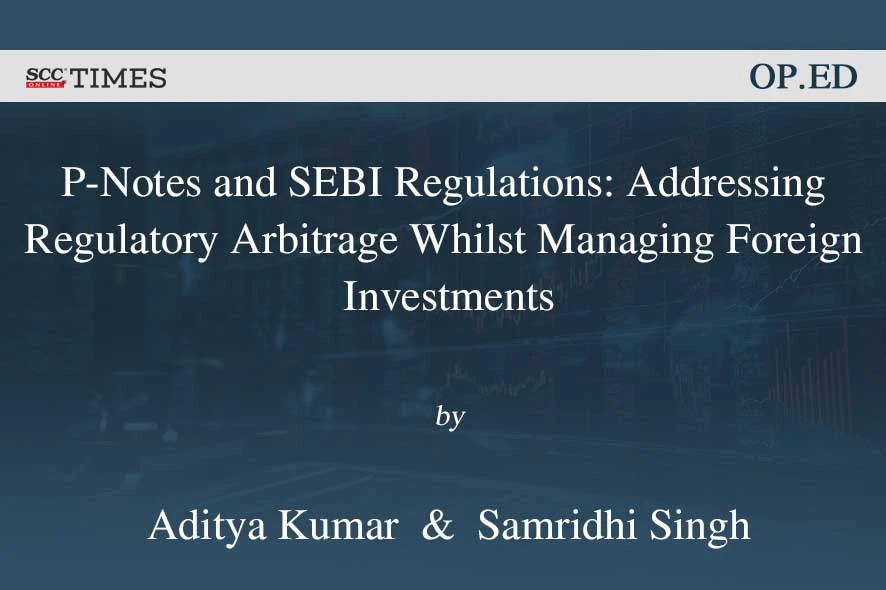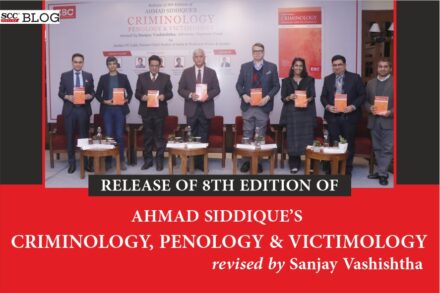Securities and Exchange Board of India (SEBI) recently issued a consultation paper1 titled “Consultation Paper on Investment by Foreign Investors through Segregated Portfolios/P-notes/Offshore Derivative Instruments” introducing new regulations for offshore derivatives instruments (ODIs) and participatory notes (P-notes). Through these regulations SEBI aims to standardise the regulatory protocol for both foreign portfolio investors (FPIs) and ODIs by striking down on the levy granted to foreign investments done through ODIs/P-notes and segregated portfolio route. Though they appear to curb the regulatory arbitrage, the practical implication of these regulations has been detrimental on the rate of investments so far.
Subsequent to the regulations, the total value of ODIs as a percentage of the assets under custody (AUC) of FPIs dropped from 44.4% at the end of Financial Year (FY) 2007 to 2.1% at the end of FY 2024 and the percentage remaining consistently below 2.5% since 2019, as per data released by SEBI. While the SEBI’s initiative aims to address this regulatory arbitrage, the proposal raises some concerns about its potential impact on market dynamic and ODI investors. In 2023 itself with the massive project of Gujarat International Finance Tech (GIFT) City’s budget announcement recognising offshore derivate contracts, P-notes were expected to make a full-fledged comeback in the market. The leverage benefits that were promised to be provided herein to instigate growth in investments stands head-on with the new SEBI regulations.
Background
Participatory notes were issued by foreign intuitional investors (FIIs) to foreign investors who wanted exposure to Indian markets without going through the hassles of the regulatory protocols whereas overseas investors use ODIs to indirectly invest in Indian stocks or equity derivatives. However, it is to be cleared that the entity issuing the ODI retains ownership of the actual securities and the financial gains from these investments are passed on to the ODI holder. Participatory notes were introduced by SEBI in 2003 to boost foreign investment inflow. Participatory notes, or P-notes as they are commonly called, provided an easy access to the foreign investors facilitating hassle-free investing for them. The loose regulations provide lucrative benefits for foreign investors along with the exposure they could garner on a leveraged basis. Moreover, the mechanism functioned as a veil for the ODI subscriber getting them economic benefits of underlying securities of which the ODI issuer was the owner.
SEBI regulates the FII, commonly the foreign banks that issue P-notes, however, it has no direct links with the P-note holders. Owing to this, SEBI could not enforce any regulations governing their dealings. In 2003 itself, SEBI (Foreign Institutional Investors) Regulations, 1995 was amended2 mandating the FIIs to disclose information concerning the P-notes or ODIs issued by them.
In 2017 SEBI banned P-notes carrying derivates as an underlying instrument with the exception of those derivative positions that were taken for hedging the equity shares held by ODI issuers. SEBI (Foreign Portfolio Investors) Regulations, 20193 introduced conditions for the issuance of ODIs. Under this SEBI mandated FPIs to disclose information about the parties involved and stressed on compliance with “Know Your Client” (KYC) rules whereas P-note holders were subjected to a diligence process.
Derivatives as underlying securities
Derivatives allow investors to hedge their positions against adverse price movements and enjoy lower transactional costs and minimal restrictions. Derivatives were allowed by SEBI in 2017 for positions taken for hedging the equity shares held by FPI, on a one-to-one basis. In 2019, however, SEBI mandated separate FPI registration for hedging ODI subject to taking a derivative position with a limit of 5% of the market wide position limit (MWPL). The ongoing limit available to Category I FPIs is 20% of the MWPL.
Derivatives allow investors to participate in the price movements of the underlying assets without directly owning them. The leverage provided by ODI in the securities market is further enhanced by derivates in the Indian market altogether creating a win-win situation for the investors. SEBI, in its consultation paper noted that “this potentially may lead to multiple levels of leverage”. Similar to any scheme making investment lucrative for foreign entities, the structured leverage provided by ODI made it a favourable stint for foreign investors.
The regulations imposed by SEBI cutting down the leverages provided to big-time foreign investors has the potential to adversely affect the foreign investments pooling in. Although the number of investors falling within the bracket may be too low for consideration but the amount of investment affected by the decision makes the opportunity cost riskier for the market. SEBI’s consultation paper reveals that only four ODI issuers would be affected but the amount involved is over Rs 3000 crores as the investors will now have to redeem within a year through existing ODIs with derivates as underlying.
Unveiling the investors
The FPI regulations, as of now, state that ODI can be issued by Category I FPIs to eligible persons after due compliance with the KYC norms. The additional conditions of reporting of suspicious transactions, monthly ODI reporting, periodic review of systems, etc. were levied by a Circular4 on 30-5-2024. However, these regulations were not applicable on the ODI subscribers creating a veil of anonymity around them. The lack of a discloser framework for investors investing via ODI allowed these foreign investors to get around using the ODI route without any regulatory hiccups.
As of July 2024, SEBI has identified potential regulatory loopholes between investments made via ODIs and FPIs using segregated portfolios. The regulator became concerned about possible misuse of the FPI route to bypass regulatory requirements after observing concentrated equity holdings among FPIs in recent years.
SEBI’s analysis revealed that 35 FPIs are currently managing investments through multiple segregated portfolios across various sub-funds or share classes. Among these, eight FPIs have established ten or more sub-funds each for maintaining segregated portfolios. One FPI in particular stands out, having created as many as 86 sub-funds.
This structure has raised concerns about regulatory arbitrage, suggesting that some investors might be using complex fund structures to potentially circumvent existing regulations. In order to curb the levy granted to ODI subscribers, SEBI proposed to make the discloser requirements laid down in the August 2023 Circular5 applicable on them and segregated portfolios of FPIs. Even though SEBI has confirmed that ODI subscribers are eligible for Category I FPI registration, this requirement seems to exclude some of the existing ODI subscribers and may increase issues for them.
At the outset, these disclosures seem to be beneficial for the Indian market regulation but the lack of a robust audit and analysis mechanism makes any favourable results unlikely. For the regulating authorities, it might become a hectic task to accept and co-relate these disclosures. What is imperative to note is that for offshore entities to provide additional information relating to their ownership, economic interest and control on a look through basis to an Indian regulator could be a major turn off.
Conclusion
Foreign investments in general and ODI investments specifically play a major role in boosting the sectorial growth of Indian economy. Approximately 45% of the total investments in Indian markets come through P-notes by FIIs. The reduced cost of transaction, availability of liquidity as transferable instruments and lack of regulatory hassles encourages foreign investment inflow. SEBI’s proposal to further tighten the noose around participatory notes represents a swift in the regulatory landscape for P-notes and ODIs.
While the market regulator intends to eliminate the gaps that allow investors leverage, the differences between utilising P-notes and segregated portfolio route compared to the more regulated FPI alternative, the proposed framework raises various concerns that need to be addressed. If not, then it may result in offshore entities that are not registered with SEBI hesitating to provide additional detailed information concerning their ownership, economic interest, and control as required by the Indian regulator.
The new disclosure requirements for ODI subscribers could discourage existing FPIs that currently utilise the ODI route to gain exposure to Indian securities from continuing to do so, resulting in possible decline in the value of ODI investment. While on one hand foreign investments prove to be extremely beneficial, putting stringent regulations can drive them away. SEBI needs to walk a tough tightrope between adequate regulation to curb potential misuse by illegitimate funds while remaining a lucrative investment option for foreign investors. Loosing inflow of foreign investments for the sake of equitable regulatory regime can prove to be a detrimental choice.
*Fourth year law student (Chanakya National Law University in Patna). Author can be reached at: adityaa.keshrii@gmail.com.
**Fourth year law student (Chanakya National Law University in Patna).
1. Securities and Exchange Board of India, Consultation Paper on Investment by Foreign Investors through Segregated Portfolios/P-notes/Offshore Derivative Instruments (sebi.gov.in, 6-8-2024).
2. Securities and Exchange Board of India (Foreign Institutional Investors) Regulations, 1995.
3. Securities and Exchange Board of India (Foreign Portfolio Investors) Regulations, 2019.
4. Securities and Exchange Board of India, Master Circular for Foreign Portfolio Investors, Designated Depository Participants and Eligible Foreign Investors, SEBI/HO/AFD/AFD-PoD-2/P/CIR/2024/70 (Issued on 30-5-2024).
5. Securities and Exchange Board of India, Circular No. SEBI/HO/AFD/AFD-PoD-2/CIR/P/2023/148, Mandating Additional Disclosures by Foreign Portfolio Investors (FPIs) that Fulfil Certain Objective Criteria (Issued on 24-8-2023).







